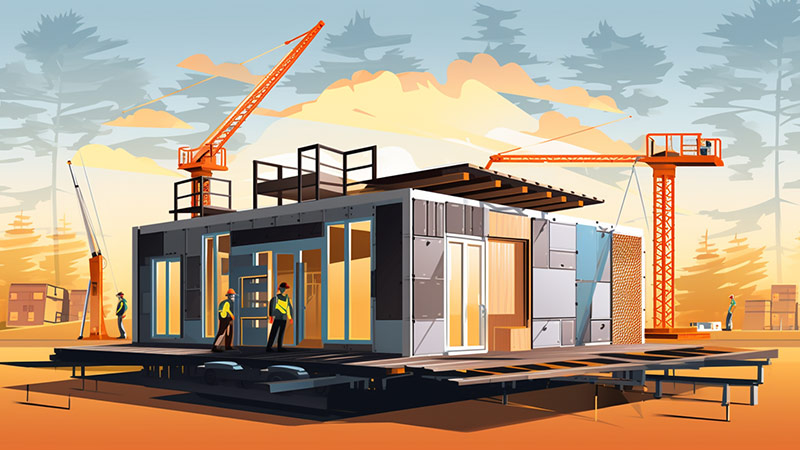Differentiating off-site, prefabricated and modular construction
Author: OCRC
Posted on Sep 22, 2023
Category: Off-site Construction

In the ever-changing world of construction, there are three terms that tend to get mixed up: off-site, prefabricated and modular construction. They might seem like they're practically the same thing, but if you take a closer look, you'll see they've got their own unique definitions. In this blog, we're going back to the most basic of off-site construction terms to break down the confusion, dig into the nitty-gritty details and figure out why these terms are often getting jumbled up.
Off-site construction
Off-site construction is like a big umbrella that includes a range of methods for creating building components away from the actual construction site. But here's the tricky part: not all off-site construction employs the principles of prefabrication or modularity.
For instance, consider a wall built entirely off-site and then transported to the location. While off-site, this method doesn't necessarily involve prefabrication as the components might not be standardized or pre-assembled. Off-site construction strategies can range from traditional carpentry to advanced industrial methods.
Prefabricated construction
Prefabricated construction, often mistaken as a synonym for modular construction, involves the creation of building components in a controlled environment before they're transported for assembly. However, not all prefabricated components are modules.
Let's say there's a factory that makes special metal parts for a building. These parts make the building process easier, but they don't always fit together like building blocks or modules. So, even though they're made somewhere else, they don’t always adhere to modular assembly principles.
Modular construction
Modular construction, a subset of prefabrication, consists of creating complete modules or units in a factory setting. These modules can include walls, floors, ceilings, and integrated systems, forming self-contained units.
Imagine constructing a hotel using modular units that house individual rooms. These self-sufficient modules are then transported to the site and fitted together like a puzzle, forming the complete structure. It's like making a bunch of pieces that fit perfectly together, almost like Lego blocks. Modular construction strictly adheres to pre-assembly, offering faster project timelines and improved quality control.
Clearing the confusion
In conclusion, it's clear that the terms off-site, prefabricated, and modular construction, while often used interchangeably, hold specific meanings that distinguish them from one another.
- Off-site construction encompasses a wide array of techniques, not all of which involve prefabrication or modularity.
- Prefabricated construction, although sometimes confused with modularity, includes components that may not always adhere to the modular assembly concept.
- On the other hand, modular construction is a subset of prefabrication, focusing on complete units that can be seamlessly integrated into a structure.
Understanding these differences is essential to effective communication within the construction industry. By recognizing the nuances between these terms, professionals can navigate conversations and projects with precision, ultimately contributing to smoother workflows, enhanced collaboration and successful construction endeavors.